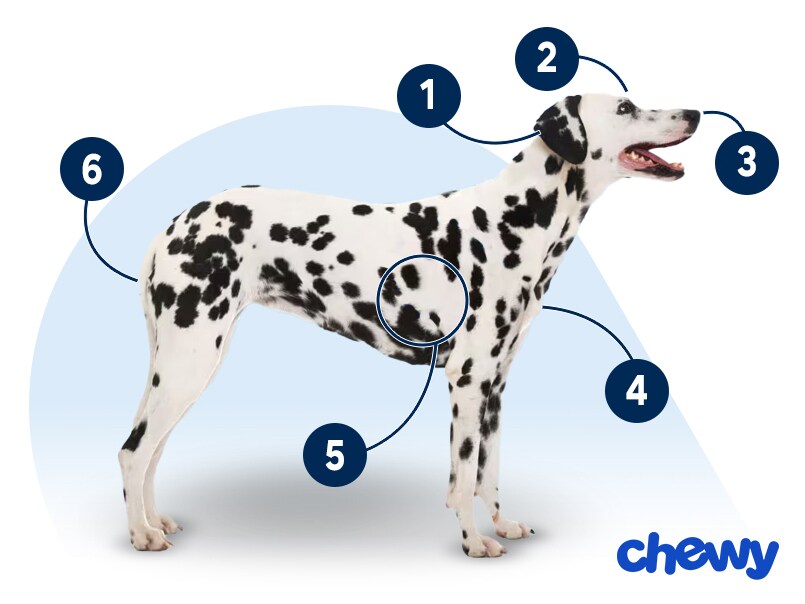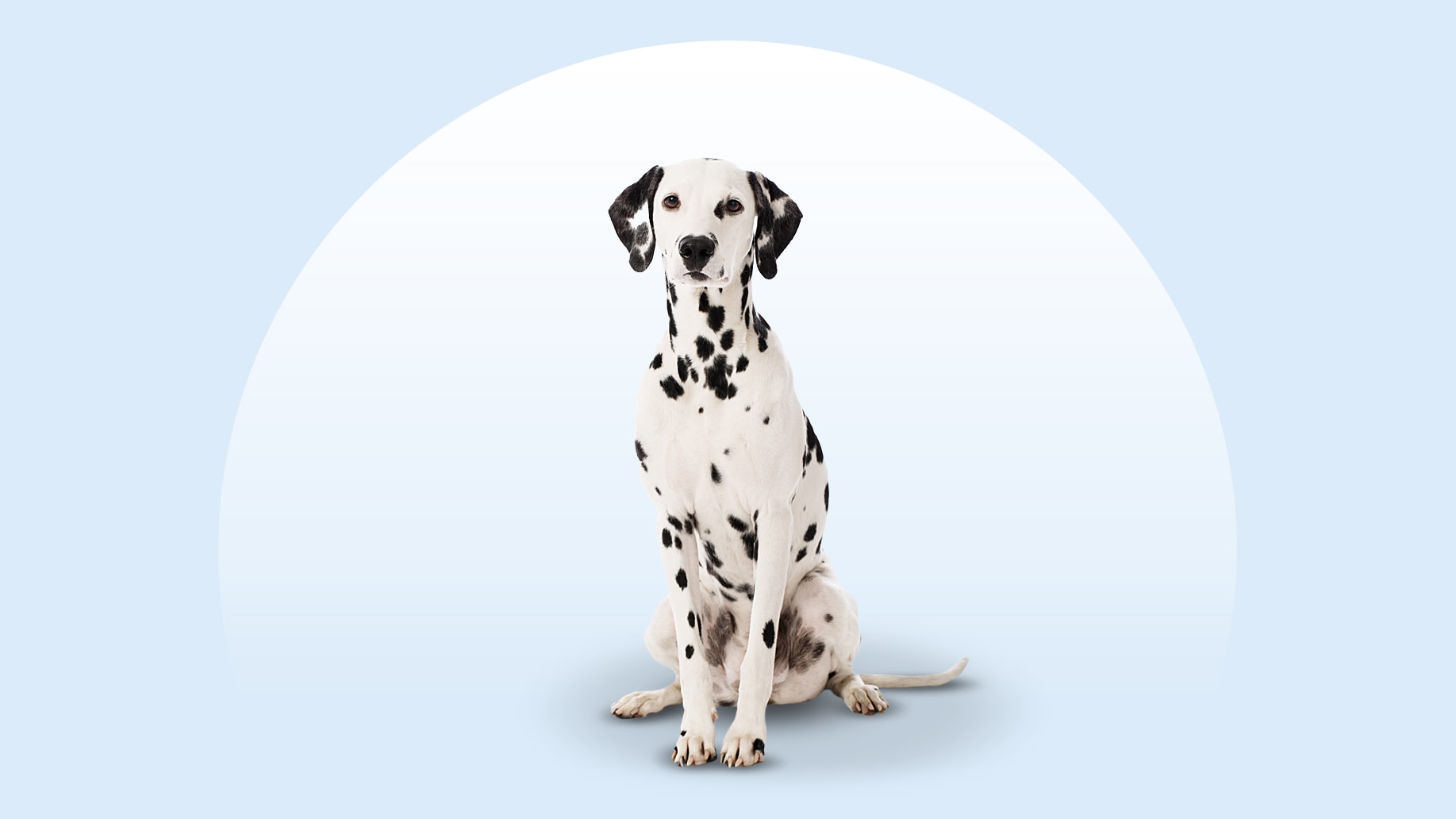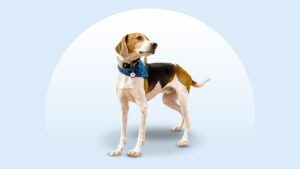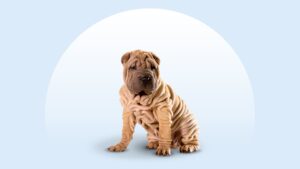Dalmatian
Updated September 19, 2025
Dalmatian
Updated September 19, 2025
With their adorable spotted coat and playful personality, the energetic Dalmatian is a charming family pet. They’ll adore a best friend who’s eager to take them on outdoor adventures, so if you’re fun-loving, affectionate, and love the call of the wild, this might be your soul pup.
Affectionate, Athletic, Sensitive
45–70 pounds
19–24 inches
11–13 years
White with Black Spots, White with Liver Spots
If you want all the neighborhood attention, adopt a Dalmatian and take them for a walk. These striking pups are sure to get plenty of friendly hellos, but they have no idea how popular they are because they’re too focused on you.
With the trademark spotted coat, a Dalmatian dog never fails to turn heads. And along with their good looks, this highly intelligent pup has all kinds of stamina. They’ll ask you to take them on runs, hikes, and other fun adventures, so put on your sneakers—you’re going to need them.
Dalmatian Characteristics
Dalmatian Appearance
Nearly every person who spots this canine (pun intended) knows the Dalmatian breed instantly, thanks to their distinctive black and white markings. But there’s more to this dog than just their unique coat pattern.

- Ears
Dalmatian dog ears are moderate in size, sit high on the head, and are rounded at the tip. They fold down to frame their face.
- Eyes
Their rounded eyes might be brown, blue, or a combination of the two.
- Nose
A Dal's round nose is either solid black in black and white pups or brown in liver (brown)-spotted dogs.
- Coat Length
A Dalmatian’s coat is short, dense, and close-fitting.
- Coat Color
Dalmatian colors are white, usually with their famous black or brown (aka liver) spots that tend to be somewhere between the size of a dime and a half dollar coin. However, Dals might also have some tan thrown into the mix, or they might have orange (rust) or lemon (pale brown) spots.
- Tail
The Dalmatian’s tail extends straight back from the spine with a slight upward curve.
Dalmatian Temperament
Dalmatians are playful and friendly dogs; they’re a social butterfly of a pup who’s probably going to like everyone they meet.
You’ll fall in love with your Dalmatian’s outgoing personality and curious mind, and you’ll probably be impressed at how quickly they learn new tricks and cues. They adore learning and playing, after all, and their goal in life is to make you proud.
This breed needs people, and if they’re left alone too often, they can develop separation anxiety. Make sure to include them in all your fun, and if you’re going to be away for a long time, consider doggy daycare or a pet sitter.
Dalmatians are exceptionally high energy and love to exercise, so they’ll mesh well with a pet parent who also loves to brag about their last good hike. If you prefer to have more low-key weekends or like to decompress on the couch after work, a Dalmatian might not be your pup.
How to Care for a Dalmatian
The Dalmatian is a beautiful breed, but don’t bring one home based on looks alone. This dog needs lots of attention, exercise, training, and grooming—and a pet parent who’s dedicated to it all.
Grooming
Training
Diet
Exercise
Environment
Dalmatian Health
The average Dalmatian lifespan is 11–13 years. Here are some health issues to be aware of.
- Bloat and gastric dilatation-volvulus (GDV): Dalmatians, like many large, deep-chested breeds, are prone to a life-threatening condition called bloat. It occurs when the stomach gets distended with air and/or food. A serious complication of bloat is gastric dilatation-volvulus, when the stomach twists on itself, cutting off blood supply to the organs. Symptoms include abdominal distension, restlessness, and dry heaving. If you notice these signs, go to the vet immediately.
- Bladder stones: Bladder stones can develop due to excess minerals in the urine. This is more common in Dalmatians than in other breeds. Bladder stones are very painful, so treat this as an emergency and get to your vet ASAP. Treatment could be as simple as a change of diet, or it could involve surgery. Talk to your vet if your dog has blood in their urine or is peeing more often, having accidents, straining while peeing, or licking their genital area more frequently.
- Dalmatian bronzing syndrome: In this condition, Dalmatians develop a pink or bronze tone to their coat. They may also experience hair loss, inflamed skin follicles, or crusty skin patches. It’s treated with antibiotics, special shampoos, and/or dietary changes.
- Deafness: Deafness, which can occur in one or both ears, is commonly seen in Dalmatians with blue eyes, and one study found that as many as 17% of Dalmatians have some form of deafness. There’s no treatment, but most dogs acclimate well to the condition and lead a full, happy life.
- Dilated cardiomyopathy: Dilated cardiomyopathy is a genetic condition where the heart enlarges, possibly resulting in heart failure. Treatment is often daily medication.
Dalmatian History
The Dalmatian’s origin isn’t clear, but the dogs take their name from Dalmatia, a region of Croatia along the Adriatic coast.
These pups were originally employed as carriage dogs, where they would run alongside horse-drawn carriages as protection. Over time, Dalmatians also worked as vermin hunters and fire house dogs.
The American Kennel Club recognized the Dalmatian breed in 1888. Today, Dals are mostly found living as family dogs.
Dalmatian puppies tend to be around $1,500. If you choose this route, pick a responsible breeder.
You can also consider Dalmatian adoption. Look for a local Dalmatian rescue like Willing Hearts Dalmatian Rescue, keep an eye out at your local shelter, or search Chewy’s database of adoptable dogs in your area.








